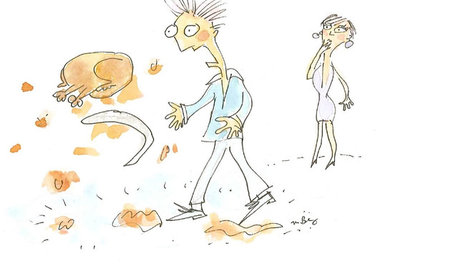Legends, Myths, Folk Tales, and Wonderful Lies
friedag
8 years ago
last modified: 8 years ago
Featured Answer
Sort by:Oldest
Comments (91)
friedag
8 years agolast modified: 8 years agoannpanagain
8 years agoRelated Discussions
The myth, of the high P myth?
Comments (39)Let's say your regular fertilizer program is 3 parts of 9-3-6 in a gallon of water. To reduce the N supplied and slow vegetative growth, you start supplying 2 parts of 9-3-6 per gallon. By reducing the CONCENTRATION of the solution to 2 parts per gallon, you cut the amount of all the nutrients by 1/3, not just the N. This reduced concentration still has enough P to keep your plants happy, but not quite enough K, so you need to add a little more K by adding potash to the soil, or by supplementing with Pro-TeKt or another K-containing product to be sure all the bases are covered. ************************** This is more about theory than anything - for those who want to manipulate the growth habits of certain plants by reducing the N supply and still be sure they are not inviting a K deficiency along with the planned deficiency of N. It's nothing to get frantic about. Al...See MoreWonderful book - 'The Myth of Progress'
Comments (5)No, it doesn't add up. And it seems an odd statement considering how many people in the world are starving. But starvation is really more of a politcal issue that a supply issue. We can and do grow and produce enough food to feed everyone on the planet. It's a matter of getting the food to the people whoe need it most. What's a great way to subdue a people? Keep them hungry. Keep them dependant on every scrap that is meted out by their government. And it's not just the so-called "third world." It's right here in the good ol' USA. Do we all realize that this administration has literally written off New Orleans? I have a friend who travels to what used to be New Orleans regularly on business. He says that what they show on the six o-clock news as being the tremendous growth and rebuilding of this gem of a city is simply smoke and mirrors. Half a block out of camera range is the real New Orleans - decimated, the population reduced by nearly half, out of work, starving, living on the streets. It's a national shame. And it lies squarely at the foot of our president. Because it never had to happen to begin with. Yeah, there will be a "healthy" economy again in "New" New Orleans. And it will be based on population growth. A population that has the economic means to purchase the million-dollar homes that are going up in the areas that are written off to the people who used to live there; condemned as unliveable, irretrievable. The 21st Century carpet-baggers with their bags filled with money. And when you say to yourself "it doesn't make sense," think about what "Deep Throat" told Woodward and Bernstein - "Follow the money." Follow it all the way to Haliburton - and the Texas White House....See MoreFavorite gardening 'wives tale'
Comments (17)I agree esther. The truth is, it probably was something else causing the problems but you wrote it off to the direct sunlight. Hey wait...aren't they a filtered light plant? LOL Adamink Nearly all plants are sun plants, the question is how much, when, etc. Violets grow well with some sun so we arranged the shade cloth so the plants got quite a lot of direct sun in the morning and afternoon. Hosta love sun and will grow like weeds in full sun, they may burn later in the year but you will have a lot of big roots for next year. With hosta it is the lack of water that is a bigger problem and heat trumps water. Some may remember the experiments I did with the types of misters used to cool people around a swimming pool. I ran the mister 24/7 on plants in full sun. They showed no ill effects period from sun or heat, they had a lot of water (I mean soggy) and no heat, the mister reduced the temp by as much as 20 degrees....See MoreA tale of two onion varieties...
Comments (20)Yellow Granex at one time was just an onion. Then the breeders got involved and now there are dozens of yellow granex varieties, each with their own name. There also are many onion varieties that are crosses of Yellow Granex and something else. There is a specific list (though it may not be available to the public because it may be considered a trade secret) of Yellow Granex varieties that can be grown and sold as Vidalia Onions by growers in that specific onion-growing region as defined by Georgia law. I've never seen the list, but the last I heard, it had 17 varieties on it. The varieties may change as breeding lines change, and the breeders have to re-submit their various Yellow Granex varieties to the Vidalia onion marketing group every few years for re-approval. I hope that helps clear up some of the confusion about which onions are grown as Vidalias. Pam, I don't know about the Cippolinis either. I'd ask at the Harvest Forum. How long onions last for me depends a lot on the weather. Once properly cured, I've had them last 6-8 months some years, which isn't bad considering our climate. They often don't last as long in really humid summers as they do in drier summers with lower humidity values. I store some of mine indoors in our kitchen pantry, which is a long narrow walk-in pantry under the staircase. I keep them way back in the back where it stays cool and dark. I keep the rest in the tornado shelter, which stays cooler than our garage. I have kept some of them in my potting shed some years, and still have usable onions in January or February. Other years they start sprouting in the shed in October or November. If you have various storage options, I'd try storing them several different ways and compare the results. That's the best way to figure out quickly what works best for you in your climate....See Morevee_new
8 years agoannpanagain
8 years agomsmeow
8 years agolast modified: 8 years agofriedag
8 years agolast modified: 8 years agoannpanagain
8 years agofriedag
8 years agolast modified: 8 years agomsmeow
8 years agowoodnymph2_gw
8 years agomsmeow
8 years agofriedag
8 years agolast modified: 8 years agocarolyn_ky
8 years agofriedag
8 years agodonnamira
8 years agofriedag
8 years agolast modified: 8 years agofriedag
8 years agolast modified: 8 years agomsmeow
8 years agofriedag
8 years agolast modified: 8 years agofriedag
8 years agolast modified: 8 years agowoodnymph2_gw
8 years agodonnamira
8 years agofriedag
8 years agolast modified: 8 years agolaceyvail 6A, WV
8 years agosheri_z6
8 years agofriedag
8 years agowoodnymph2_gw
8 years agofriedag
8 years agolast modified: 8 years agosheri_z6
8 years agowoodnymph2_gw
8 years agofriedag
8 years agofriedag
8 years agolast modified: 8 years agomsmeow
8 years agowoodnymph2_gw
8 years agofriedag
8 years agovee_new
8 years agomsmeow
8 years agosheri_z6
8 years agocarolyn_ky
8 years agofriedag
8 years agolast modified: 8 years agofriedag
8 years agofriedag
8 years agoannpanagain
8 years agovee_new
8 years agolast modified: 8 years agoannpanagain
8 years agovee_new
8 years agomsmeow
8 years agolast modified: 8 years agowoodnymph2_gw
8 years agocarolyn_ky
8 years agofriedag
8 years agolast modified: 8 years ago
Related Stories

MOST POPULARThanksgiving Tales: When the Turkey Tanks
Houzz readers prove adept at snatching victory from the jaws of entertaining defeat
Full Story
FUN HOUZZ31 True Tales of Remodeling Gone Wild
Drugs, sex, excess — the home design industry is rife with stories that will blow your mind, or at least leave you scratching your head
Full Story
BEFORE AND AFTERSSee 6 Yards Transformed by Losing Their Lawns
Wondering whether a turf lawn is the best use of your outdoor space? These homeowners did, and they found creative alternatives
Full Story
LANDSCAPE DESIGNMysticism and Meaning Meet in an Ohio Artist’s Gardens
Step into landscape scenes rife with symbolism, inspired by math, philosophy and the stars
Full Story
WORKING WITH PROSWhat Do Landscape Architects Do?
There are many misconceptions about what landscape architects do. Learn what they bring to a project
Full Story
HOUSEKEEPINGWhat's That Sound? 9 Home Noises and How to Fix Them
Bumps and thumps might be driving you crazy, but they also might mean big trouble. We give you the lowdown and which pro to call for help
Full Story
GARDENING AND LANDSCAPINGPorch Life: Banish the Bugs
Don't let insects be the bane of your sweet tea and swing time. These screening and product ideas will help keep bugs at bay on the porch
Full Story
MOST POPULARHow High Should You Mount Your TV?
Today we look at an important question to consider when locating your television: How high should you set it?
Full Story
FEEL-GOOD HOME10 Ways to Fight Pollen at Home
Keep sneezing and stuffiness to a minimum by making your house as pollen free as possible
Full Story
FRONT YARD IDEAS10 Ideas for a Front-Yard Edible Garden Your Neighbors Will Love
Choosing attractive, well-mannered plants and sharing the bounty will go a long way toward keeping the peace
Full StorySponsored
Central Ohio's Trusted Home Remodeler Specializing in Kitchens & Baths




donnamira